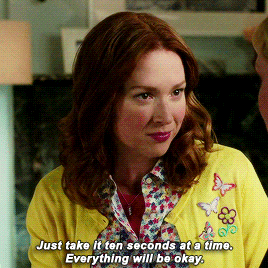"Separate but equal." This was a clause standardized and legalized by the United States constitutional laws, allowing public institutions to be separated and distinct based on race. This clause was later confirmed by the landmark Supreme Court case Plessy v. Ferguson (1896), which basically allowed the implementation of state-institutionalized segregation.
It took over half a century later for the American population to realize that this type of discrimination was wrong and would create problems for the minority population. In 1954, another landmark Supreme Court case, Brown v. Board of Education (1954), allowed the overturning of any type of legal separation law, especially in regards to the educational isolation and separation of races.
Sixty-two years have passed since fundamental change, yet our U.S. education system still seems to struggle with creating equal opportunity for all students, regardless of race. The worst part of this all is that most of this racism goes unnoticed and is never addressed. The reality is that the racism we find in our educational system is not only social discrimination, but also institutional discrimination. In other words, the way that our school districts are set up has the potential, in most cases, to inevitably set students up for failure solely based on race and income.
The subtlety of this institutional racism leads a lot of people to believe that it doesn't actually exist. But think again. Think about all of the people who have had buildings at your school named after them. Think about all of the people on your school's Board of Trustees. Think about the higher-ups in your school, whether it be the administration, professors, or adjuncts. Think about the classrooms that you sit in each and every day, and think about the students who sit by your side. If you find that most of these categories are filled with a majority of white citizens rather than people of color, then you probably attend an institutionally-racist high school or university.
The most unfortunate part of this entire circumstance that a lot of this institutional racism is often undermined and goes unnoticed. Our society seems to maintain this "out of sight, out of mind" mentality, where it only matters to someone if they are the one experiencing it. However, if we want to make a change to a problem that has been evident for decades, we are going to need to work together to make that change.
In most areas across our nation, the public school system is determined by districts. These districts all obviously have families of the same income levels, considering that the houses in the towns cost about the same amount of money. This means that in many low income neighborhoods, the schools get less funding because of the fact that the taxes that contribute to school funding are so low. Statistics have shown that these low income students, who are usually of a minority race, do not get the same type of education as privileged students because of the lack of school funding. So how can we expect our students to overcome the racial gap that education puts in their way if we aren't granting them the support that they need to do so,
Going off of this point, basically if you are a low income family, you are more than likely going to end up in a school with other low income families, lower funds, and lower graduation rates. Unfortunately, if our government isn't support these low income schools as much, if not more, than schools with middle or high income students, these low income schools will continue to fail. Our graduation rates in these schools will continue to drop and we will continue this trend of institutionalized racism.
Now, you might be asking yourself, is anything being done to help it? Well, there are a lot of organizations and foundations attempting to help these low income schools pick themselves up and get them on the road to success. For example, Teach for America is an organization that sets up teachers and educators, both new and old, at schools where a majority of the student population are minority and low income students. These teachers are allowed to set up an environment to make these students feel more comfortable in school settings, give them the tools to gain a proper education, and provide support for any students that might be experiencing a troubled life at home. For first year teachers, they also have numerous programs where these teachers can gain teaching experience while working towards their masters degree at the same time. Being that I am both passionate about teaching and helping others, I am looking to work for this organization after I graduate.
There are also many other programs that help students from low income high schools prepare for college and standardized testing. For example, Breakthrough Collaborative is a program that provides high school juniors and seniors with SAT tutors to help them prepare so that they can succeed and get into prestigious colleges and universities.
As much as these programs have done so much to help these disadvantaged students, unfortunately it is not enough. We still have such a large population of low income and minority students who aren't making it through high school, aren't doing well on standardized testing, and aren't making it into the universities that they have the potential to be accepted into. Why? Because they are not receiving the proper tools from these low-funded schools.
So, what is the solution? Well, this is definitely a huge problem that won't be solved quickly. If we, as a population, attempt to provide support and an access to education for these students, we will be able to ensure that every child reaches his or her full potential.
Cheers to an America where students truly do have equal opportunity.




 man running in forestPhoto by
man running in forestPhoto by 





 "I thought you knew what you signed up for."
"I thought you knew what you signed up for." man and woman in bathtub
Photo by
man and woman in bathtub
Photo by  four women sitting on black steel bench during daytime
Photo by
four women sitting on black steel bench during daytime
Photo by  Uber app ready to ride on a smartphone.
Photo by
Uber app ready to ride on a smartphone.
Photo by  woman in red tank top and blue denim shorts standing beside woman in black tank top
Photo by
woman in red tank top and blue denim shorts standing beside woman in black tank top
Photo by  blue marker on white printer paper
Photo by
blue marker on white printer paper
Photo by  welcome signage on focus photography
Photo by
welcome signage on focus photography
Photo by  woman in white and black striped long sleeve shirt lying on bed
Photo by
woman in white and black striped long sleeve shirt lying on bed
Photo by  pink pig coin bank on brown wooden table
Photo by
pink pig coin bank on brown wooden table
Photo by  person holding iPhone 6 turned on
Photo by
person holding iPhone 6 turned on
Photo by  person holding pencil near laptop computer
Photo by
person holding pencil near laptop computer
Photo by  person slicing vegetable
Photo by
person slicing vegetable
Photo by 
 woman covering mouth with sweater
Photo by
woman covering mouth with sweater
Photo by  person holding remote pointing at TV
Photo by
person holding remote pointing at TV
Photo by  a woman with her arms raised in a crowd of people
Photo by
a woman with her arms raised in a crowd of people
Photo by  "Shocked disbelief: '95% of the population is undateable?'"
"Shocked disbelief: '95% of the population is undateable?'"








